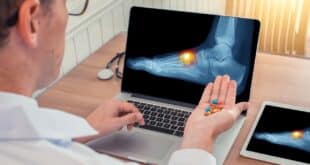Minimizing Your Risk
Before you get to the point of feeling that awful pain, there are a few things you can do to minimize your risk.
– Before you start exercising, take a moment or two to stretch your back. This will help prevent injuries.
– Make sure your work environment supports a healthy posture. Slumping while sitting or standing can increase the risk of back pain.
– Wear comfortable shoes especially if you are engaged in a lot of standing or walking.
– If you smoke, quit. Cigarette smoke narrows the blood vessels that bring nutrients to the discs in your back. Smoking can increase the risk of spine disc degeneration.
– Don’t try to lift heavy objects by yourself. Get help. If no help is available, then lift carefully by bending your knees. Do not twist while lifting. Keep your feet spread apart to have a stronger foundation for lifting and keep the object close to your body.
– Maintain a healthy weight. Extra weight on your stomach can increase the stress on back muscles.
– Exercise your stomach muscles to help support your back. Strong stomach muscles and leg muscles can minimize the strain on your back muscles.
– If you sit at the computer for long periods of time, get up and walk around for a minute. Stretch your muscles to help relieve stressors. Make sure you have a desk and chair that will help support your back.
If you have chronic back pain, get help and learn as much as you can. The National Institute of Neurological Disorders and Stroke offers ideas and resources that can help.
National Institute of Neurological Disorders & Strokes
BRAIN
P.O. Box 5801
Bethesda, MD 20824
(800) 352-9424
Pamela A. Williams writes from Southern California.
1 Low Back Pain Fact Sheet. National Institute of Neurological Disorders and Stroke.http://www.ninds.nih.gov/disorders/backpain/detail_backpain.htm. Accessed December 30, 2011.
© 2002 - 2025, AnswersForMe.org. All rights reserved. Click here for content usage information. Answers for Me Support & encouragement for every-day life
Answers for Me Support & encouragement for every-day life



